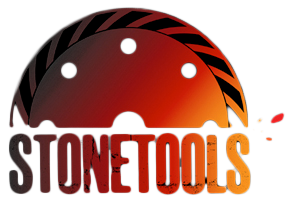G684 – avoiding the nightmare
If your reading this and the code G684 means something to you, then you have either had this material cause you problems or know what a problem this material can be. This article aims to clear up some of the confusion and outline some of our findings after working with this disconcerting material.
We were called to a project to look at a ‘granite’ job that had been stained white after being mopped with an acidic solution. 
Initially this was very puzzling as the white stains were not etched (no change to the surface texture) and granite typically is not sensitive to chemical attack in this manner. With further investigation we found that the ‘granite’ came from China, leading us to believe that the material had been ‘doctored’. It is quite common for the Chinese to use oils and dyes to stain light granite black, to improve its aesthetics and drive up the price. This issue is more common on bench tops where lemon or wine is spilled on the surface and the artificial colour is broken down, leaving the natural colour as a ‘stain’. We tested this theory by grinding and polishing the back of a sample tile, matching the factory finish and the result was the same colour as original. Ruling out the ‘doctored’ theory and left even more confused than before. The material looks like granite, behaves like granite and in addition we where even told that it was granite from the supplier, but granite does not do this. We delved deeper to find out the product is not granite.
China black, Raven black and Fujuan black are some of the more commonly known names for this stone, however its official code is G684. Which is where the first problem arises. The material is marketed and sold as granite as depicted by the G in its code, representing granite. Almost charcoal in colour with a random distribution of black spots ranging in 5-20mm in size, even to the trained eye it is easy to mistake this dense material for granite. By definition granite has more than 20% quartz by volume, G684 has none. Its mineral composition predominately calcic pyroxene, plagioclase feldspar and olivine and thus a volcanic rock, Basalt.
When in contact with even mild acids, minerals in the stone turn opaque causing the white ‘staining’ or bleaching. After discussing this issue with several trusted clients across the country and studying a very in-depth report called ‘Chinese basalt G684 - User beware’ by Dr. Hensel. A clear cut solution to the problem was still not evident. Hansel reported that any application of acid will cause irreversible whitening of the stone and that G684 was too dense to accept a sealer or enhancer.
Our tests indicated that the whitening could be slightly masked with a penetrating enhancer, however not adequately enough to rectify the problem to a professional standard. We then began experimenting with resurfacing out the white marks, due to the G684s density we found that our 4” G-flex diamond pads outperformed marble or engineered pads.

Attacking the affected areas with our weighted VADER250 floor machine, equipped with the speed plate starting at 400 grit followed by 800 grit then finishing with an 800 grit diamond impregnated Nylon pad (to accommodate for picture framing, caused inconsistencies in the tiles height). Given the stones density these pads cut quickly, only a few passes were necessary.

Some bright white spots needed to be first cut back at 200 grit with a hand polisher but we found that even the brightest white stains were no deeper than .75 to 1mm. As pictured the majority of the damage was against walls, edging by hand was not necessary as the speed plate allowed us to cut within 2mm from an edge, significantly reducing time rectifying the problem. The results were spectacular. By cutting the affected areas back, the use of a penetrating enhancer was not necessary. Contrasting Hansel’s report, we also had success sealing the G684 with a high quality penetrating sealer.

Based on our findings, when dealing with flamed or exfoliated G684 that has been damaged with acid we would recommend resurfacing out the damage with a brush hammer or antiquing brush. The VADER250 with our frankfurt plate and 30 grit antiquing brushes will be the perfect combination for this. However, be prepared to resurface the entire surface as it is near impossible to perfectly match an exfoliated or flamed finish with our a flaming torch.
In summery never clean G684 with acid, however, if acid damage occurs it is relatively easy to rectify honed or polished surfaces using diamond pads. Flamed, exfoliated or textured can be resurfaced with antiquing brushes which will still leave a textured finish but the finish will be slightly different due to a different texturing process that can only be replicated in a large scale stone processing factory. A penetrating enhancer will slightly mask acid damage but only to some degree.
Comments
Davidinors
October 01 2021
Вывод сайтов в топ поисковых систем. Уникальные технологии по продвижению сайтов с выводом в топ поисковиков https://xn——-7kcahliahtcp1cinbpc3awc.xn—p1ai/
chlorochin
June 07 2021
is hydroxychloroquine safe to take aralen buy online define hydroxychloroquine
cost tadalafil generic
June 07 2021
tadalista 20mg buy tadalis tadalafil (tadalis-ajanta)
tadalafil dosage bodybuilding
June 06 2021
tadalafil dosage bodybuilding tadalafil evolution peptides tadalafil natural substitute
fda hydroxychloroquine
June 05 2021
malaria drug chloroquine interactions for hydroxychloroquine is chloroquine phosphate over the counter

Comments
112 Comments